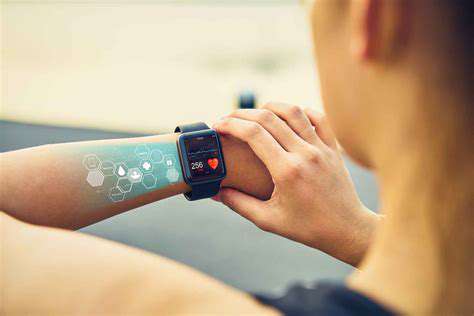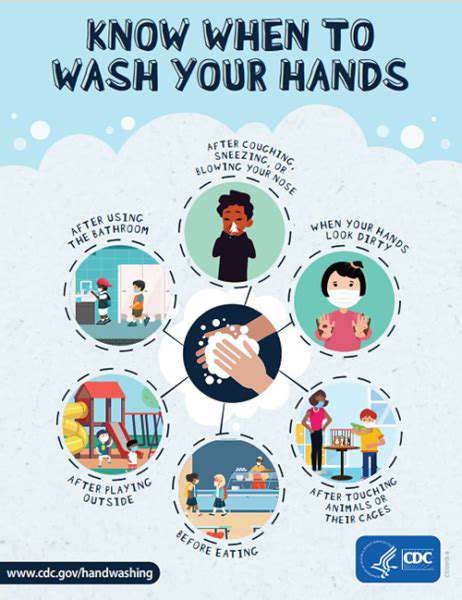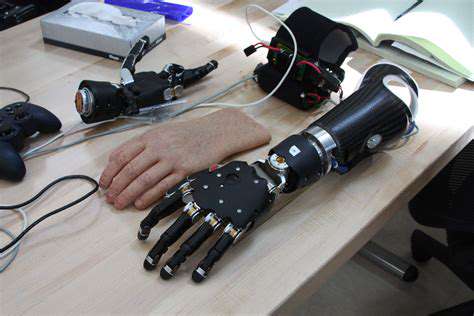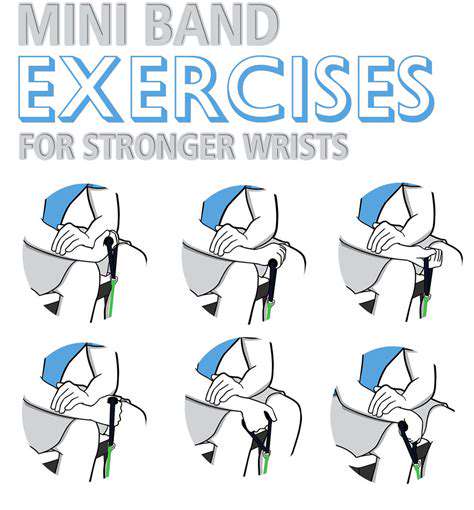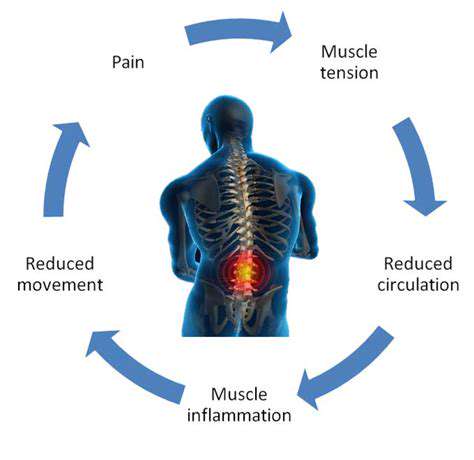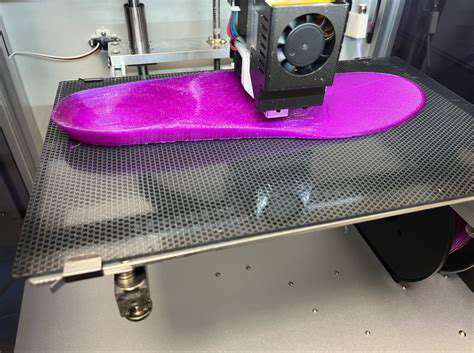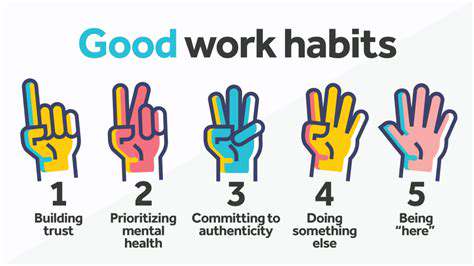Innovative Methods for Managing Carpal Tunnel Syndrome
Table of contents
Ergonomics is vital for preventing workplace injuries like Carpal Tunnel Syndrome.
Workstation modifications can significantly reduce symptoms of Carpal Tunnel Syndrome.
Education about ergonomic practices is important for long-term management of CTS.
Physical therapy can effectively alleviate symptoms of Carpal Tunnel Syndrome.
Targeted exercises help strengthen wrists and reduce stress on the median nerve.
Acupuncture reduces pain and improves function for those with Carpal Tunnel Syndrome.
Chiropractic care may alleviate CTS symptoms via spinal manipulation and increased blood flow.
Mindfulness techniques can help manage stress related to Carpal Tunnel Syndrome.
Nutrition plays a role in stress management for individuals experiencing CTS.
Wearable devices provide insights into wrist movement patterns to manage Carpal Tunnel Syndrome.
1. Ergonomic Adjustments and Workplace Modifications
Understanding Ergonomics in the Workplace
Ergonomics is fundamentally about designing workspaces and tools that fit the user. It involves comprehensively studying how people interact with their environment, particularly focusing on the physical aspects that can lead to injuries like Carpal Tunnel Syndrome (CTS). Research indicates that nearly 50% of ergonomic-related injuries arise from improper workstation setups. Thus, understanding the principles of ergonomics is crucial for both prevention and ongoing management of CTS.
Common factors to consider include the height of desks and chairs, the position of monitors, and the placement of keyboards. Inadequately positioned equipment can strain the wrists and hands, exacerbating symptoms of CTS. For instance, your keyboard should generally be level with your elbows to reduce pressure on the wrist; this configuration can significantly decrease the likelihood of developing symptoms. Adjusting the workstation setup should be taken seriously as this can serve to mitigate pain associated with repetitive strain injuries.
Practical Modifications to Reduce Symptoms
Implementing practical modifications can greatly assist individuals suffering from Carpal Tunnel Syndrome. Simple changes such as using wrist rests, ergonomic mice, or keypads designed specifically for reducing wrist strain can alleviate discomfort during daily tasks. According to studies, the introduction of wrist-supportive devices has shown to improve user posture and decrease strain in individuals with CTS.
Moreover, considering the working environment is essential. Introducing standing desks can change the dynamic of how work is performed, allowing individuals to alternate between sitting and standing, which can relieve pressure on the wrists. This method of desk modification has gained traction, with various studies indicating that alternating between positions significantly improves overall workstation comfort.
Education and Awareness for Long-term Management
Patient education is pivotal for the long-term management of Carpal Tunnel Syndrome. Those affected should be informed about the importance of Proper Ergonomic Practices and how they impact their symptoms. Regular workshops or training sessions in workplaces can enhance awareness and equip employees with strategies to mitigate risks associated with repetitive tasks.
Moreover, involving healthcare providers in this educational process can offer tailored advice based on individual needs. Research highlights that multidisciplinary approaches, integrating occupational therapy with ergonomic training, lead to better recovery outcomes for those suffering from CTS. Therefore, maintaining open communication between patients and healthcare professionals about workplace modifications can greatly promote wellness over time.
2. Physical Therapy and Targeted Exercises

Understanding Carpal Tunnel Syndrome
Carpal Tunnel Syndrome (CTS) is a condition that affects the hand and wrist, leading to symptoms such as numbness, tingling, and pain. The condition arises when the median nerve, which runs through the carpal tunnel in the wrist, becomes compressed. Studies indicate that up to 10 million individuals in the United States may experience CTS at some point in their lives. Understanding the mechanics of the wrist is crucial for effective treatment.
The condition is particularly common among individuals engaged in repetitive wrist movements, including those in occupations like typing, assembly line work, and certain sports. Recognizing early symptoms is essential for preventing progression to more severe issues.
Benefits of Physical Therapy
Physical Therapy serves as a vital part of managing Carpal Tunnel Syndrome. By engaging in tailored exercises and techniques, patients can promote healing and alleviate discomfort effectively. An effective physical therapy program typically includes stretching exercises, manual therapy, and ergonomic education. These elements work together to reduce pressure on the median nerve, mitigating pain and strengthening surrounding muscles.
Research published in the Journal of Hand Therapy has shown that individuals who pursued physical therapy for CTS reported a significant reduction in symptoms after a few weeks of consistent treatment. It is essential to choose a qualified therapist who understands the nuances of this condition.
Targeted Exercises for Relief
Targeted exercises are instrumental in alleviating symptoms of Carpal Tunnel Syndrome. These exercises are specifically designed to stretch and strengthen the wrist tendons while reducing stress on the median nerve. Some notable exercises include wrist flexor stretches, nerve gliding exercises, and range-of-motion movements.
- Wrist Flexor Stretch: Helps in elongating the muscles that may contribute to nerve compression.
- Nerve Gliding Exercises: Aids in facilitating better movement of the median nerve through the carpal tunnel.
- Range-of-Motion Exercises: Encourages flexibility and strengthens surrounding muscle groups.
Many patients find immediate relief through these targeted exercises. The effectiveness enhances significantly when these exercises are integrated into a regular routine, ideally supervised by a physical therapist who can provide necessary modifications.
Ergonomic Modifications
Adopting ergonomic modifications at work and home can prevent Carpal Tunnel Syndrome from worsening. This approach involves assessing your workspace and making adjustments to improve your wrist posture and reduce strain. Simple changes, such as ensuring your chair and desk are at the correct height or using wrist rest supports, can significantly mitigate symptoms.
An ergonomic keyboard and mouse can also make a considerable difference by allowing for wrist-friendly angles. Occupational therapists often recommend courses on ergonomic practices for those facing chronic wrist issues, which can serve as a proactive way to manage symptoms.
Importance of Consistency
Consistency in performing physical therapy and exercises is key to achieving lasting relief from Carpal Tunnel Syndrome. Patients who engage in their rehabilitation regimen regularly are more likely to see improvements in their symptoms. It's not just about doing the exercises; it's about committing to a lifestyle change that incorporates these movements.
In addition to exercises, patients should be encouraged to take breaks during repetitive tasks and practice good ergonomics daily. This holistic approach ensures that the benefits of physical therapy extend beyond treatment sessions into everyday life.
Consulting Professionals
While self-management strategies are beneficial, consulting with healthcare professionals is crucial in managing Carpal Tunnel Syndrome effectively. Physicians, physical therapists, and occupational therapists can provide individualized treatment plans based on the severity of symptoms. They can also educate patients on the most effective techniques and exercises tailored to their specific needs.
Seeking early professional intervention can help in preventing a worsening of the condition and reduce the likelihood of requiring surgical options later on. A collaborative approach among various healthcare providers leads to a comprehensive management strategy, maximizing recovery opportunities for patients.
3. Alternative Therapies: Acupuncture and Chiropractic Care

Understanding Acupuncture for Carpal Tunnel Syndrome
Acupuncture has gained popularity as an alternative therapy for various conditions, including carpal tunnel syndrome. This ancient practice involves the insertion of fine needles into specific points on the body. Research has shown that Acupuncture can help alleviate pain and improve function in those suffering from this condition. A study published in The Journal of Pain reported significant improvements in patients receiving acupuncture compared to those receiving standard care.
The treatment typically involves multiple sessions, often ranging from six to twelve, depending on individual needs. Some patients report immediate relief, while others may notice gradual improvement over time. It is essential to consult a qualified acupuncturist, as the precise placement of needles can significantly impact outcomes.
Chiropractic Care and Its Role in Managing Symptoms
Chiropractors utilize spinal manipulation and other manual techniques to address musculoskeletal issues, which can indirectly alleviate symptoms associated with carpal tunnel syndrome. By adjusting the spine and enhancing blood flow, chiropractors may reduce nerve compression in the wrist area. This holistic approach aims to restore proper function in the nervous system, potentially providing relief from discomfort. Studies indicate that chiropractic care can lead to improved mobility and decreased pain for many patients.
It is crucial to choose a chiropractor with experience in treating carpal tunnel syndrome, as they will understand the specific adjustments and techniques that can create the most benefit. Regular sessions may be needed to maintain optimal health and prevent symptom recurrence.
How Acupuncture Works Mechanistically
The mechanism of acupuncture involves the stimulation of the body's nervous system, which can promote the release of neurotransmitters and hormones. These biochemicals play a crucial role in regulating pain and inflammation. Recent studies support the idea that acupuncture increases blood circulation to the affected areas and helps reduce swelling around the wrist, which is beneficial for carpal tunnel syndrome sufferers.
This scientific understanding has encouraged more healthcare providers to incorporate acupuncture into their treatment plans. Patients should be aware that while acupuncture can be effective, it is often most beneficial when used alongside other therapeutic modalities. Thus, a multidisciplinary approach to treatment may yield the best outcomes.
Comparative Efficacy of Both Treatments
Both acupuncture and chiropractic care offer unique advantages for managing carpal tunnel syndrome. While acupuncture focuses on pain relief and nerve function, Chiropractic treatment emphasizes spinal alignment and overall musculoskeletal health. Clinical trials comparing these modalities often show that patients report varying levels of satisfaction based on their specific circumstances.
- Acupuncture may provide faster pain relief for some individuals.
- Chiropractic care can lead to long-term benefits by addressing underlying issues.
- A combination of both treatments may optimize recovery.
Ultimately, the choice between these therapies may come down to personal preference and the severity of symptoms. Engaging with healthcare professionals who understand both approaches can help create a tailored management plan.
Considerations and Risks of Alternative Therapies
As with any treatment approach, it is essential to understand the potential risks associated with acupuncture and chiropractic care. Acupuncture, while generally considered safe, can lead to adverse effects, such as minor bleeding or bruising. In some rare cases, improper needle placement may cause more significant issues. Hence, it is critical to choose a licensed and experienced practitioner for either therapy.
On the other hand, chiropractic adjustments, although beneficial, may not be suitable for everyone. Patients with specific pre-existing conditions must consult their physician before undergoing treatment. Ensuring a comprehensive medical evaluation allows for safer integration of these therapies into an overall treatment plan.
Conclusion: Personalized Therapeutic Options
In conclusion, both acupuncture and chiropractic care provide viable alternative therapies for individuals coping with carpal tunnel syndrome. It is important for patients to keep in mind that responses to treatment can vary significantly from person to person. Individualized approaches should consider each patient's history, symptoms, and preferences.
Ultimately, working with a multidisciplinary team, including traditional and alternative medicine practitioners, can significantly enhance the effectiveness of treatment strategies. By taking a personalized approach, individuals can achieve a better quality of life and effectively manage their symptoms.
4. Mindfulness and Stress Management Techniques
Understanding Mindfulness in Stress Management
Mindfulness is the practice of being present and fully engaged with the current moment without judgment. Studies have shown that incorporating Mindfulness Techniques can significantly reduce stress levels. By focusing on the here and now, individuals with carpal tunnel syndrome can alleviate their perception of pain, which often intensifies during stressful moments.
Research published in the Journal of Occupational Health Psychology emphasizes the connection between mindful meditation and reduced symptoms of chronic pain. This suggests that adopting mindfulness practices can not only foster mental clarity but also aid physical recovery by promoting relaxation and reducing psychological stress.
Techniques for Practicing Mindfulness
There are various methods to incorporate mindfulness into your daily routine. Simple practices include mindful breathing, where individuals focus on their breath for several minutes, allowing thoughts to come and go without attachment. Additionally, engaging in mindful stretching or gentle yoga can be beneficial for carpal tunnel patients, integrating physical movement with mindfulness.
Another technique involves mindfulness walks, where instead of zoning out, participants consciously notice the sensations of walking, the sounds around them, and the rhythm of their breath. This practice not only promotes relaxation but also encourages the release of tension in the wrists and hands, which are often affected by overuse and stress.
The Role of Meditation in Stress Relief
Meditation is a powerful tool for managing anxiety and stress, which are common in individuals dealing with carpal tunnel syndrome. Taking just 10 to 15 minutes daily to meditate can effectively reduce cortisol levels, the body’s primary stress hormone. According to the American Psychological Association, regular meditation leads to better emotional regulation and mental resilience.
Biofeedback Techniques
Biofeedback is an innovative method that can aid in stress management and may benefit those with carpal tunnel syndrome. This technique uses sensors to provide real-time feedback on physiological functions, such as muscle tension and heart rate. By becoming aware of these bodily signals, individuals can learn to control their stress responses more effectively.
By integrating biofeedback with mindfulness practices, patients can develop a deeper understanding of their physical and emotional states, leading to comprehensive management of their condition. A study in the Journal of Pain Research indicates that biofeedback combined with mindfulness meditation significantly enhances pain relief perceptions for chronic pain sufferers.
Identifying Stress Triggers
A key component of effective stress management is identifying specific triggers that exacerbate symptoms. Common triggers for carpal tunnel syndrome include repetitive motions, prolonged computer use, and poor ergonomics. Keeping a journal can help track activities and occurrences, making it easier to pinpoint what situations lead to elevated stress and discomfort.
Once identified, individuals can implement ergonomic adjustments or take scheduled breaks, reducing overall stress levels and improving hand health over time. For example, using ergonomic keyboards or wrist supports can mitigate strain and contribute to a more balanced work environment.
Nutrition and Its Impact on Stress Levels
Nutrition plays a crucial role in managing stress. A balanced diet, rich in antioxidants and vitamins, can help the body better cope with stress. Foods high in omega-3 fatty acids, such as salmon and walnuts, have been shown to reduce inflammation and improve mood, making them especially beneficial for individuals experiencing carpal tunnel syndrome.
Incorporating magnesium-rich foods like leafy greens and legumes can also help as magnesium is known to regulate cortisol production. A review in the journal Nutrients highlights that adequate magnesium intake may lower stress and anxiety levels, thus promoting better overall health and well-being.
Creating a Supportive Environment
Finally, establishing a supportive environment can greatly reduce stress. Surrounding oneself with understanding family, friends, and coworkers fosters a positive atmosphere conducive to stress relief. Communicating openly about challenges related to carpal tunnel syndrome allows for shared problem-solving and support.
Workplaces can implement policies that encourage breaks and ergonomic evaluations, creating a culture where health is prioritized. This not only contributes to individual well-being but also enhances group morale and productivity, ultimately making a more comfortable work environment for everyone.
5. Advanced Technology: Wearable Devices
Understanding Wearable Devices in Carpal Tunnel Management
Wearable devices have rapidly evolved over the past decade, offering innovative solutions for managing various health conditions, including carpal tunnel syndrome (CTS). These devices are designed to monitor activities and physiological responses, enabling users to gain insights into their conditions. For CTS, specific wearables can track wrist movement patterns, which are crucial for identifying triggers and facilitating early interventions.
Research conducted in the realm of biomechanics indicates that real-time data from wearables can reduce the time spent in harmful wrist positions, subsequently alleviating symptoms of carpal tunnel syndrome. By employing these devices, patients can become more aware of their posture and movement, which are critical factors in mitigating CTS.
Types of Wearable Devices for CTS
There are several types of wearable technologies specifically tailored for individuals suffering from carpal tunnel syndrome. For instance, smart wristbands or braces equipped with sensors can provide feedback on wrist position and strain levels. These devices often have accompanying apps that allow users to log their symptoms and activities, fostering a more informed approach to management aimed at optimizing day-to-day comfort.
Additionally, more advanced options include smart gloves that offer tactile feedback during repetitive actions, reminding users to take breaks and adjust their posture. A study published in the Journal of Electromyography and Kinesiology highlighted that participants using such gloves showed a significant reduction in discomfort levels over a four-week period.
In summary, understanding these various devices' functionalities is vital for selecting the right one to complement an individualized treatment plan for carpal tunnel syndrome.
Integrating Wearables Into Rehabilitation Programs
Incorporating wearable devices into rehabilitation strategies for carpal tunnel syndrome can enhance recovery outcomes significantly. These devices can serve as motivators, encouraging patients to adhere to their prescribed exercises and therapy regimes. For instance, fitness trackers can monitor adherence to rehabilitation exercises, providing real-time feedback that is crucial for progress assessment. This level of engagement prompts individuals to take responsibility for their recovery, leading to better long-term results.
Furthermore, personalized data analytics can be integrated into therapy sessions, allowing healthcare professionals to tailor interventions based on precise measurements of patients' performance and symptoms. This data-centric approach ensures that rehabilitation programs are agile and responsive to individual needs, ultimately promoting healing efficiency.
Challenges and Considerations in Usage
While wearable devices present promising advancements in managing carpal tunnel syndrome, there are challenges that warrant consideration. One significant issue is adherence; patients may become disenchanted with the technology if they find it uncomfortable or if the data appears overwhelming. Therefore, education about the benefits of these devices is essential for fostering compliance among users.
Privacy and data security also pose important challenges in the deployment of wearables for health monitoring. Users must be ensured that their personal health data is safeguarded against unauthorized access. Furthermore, not all wearable technologies are created equal, and it is crucial to conduct thorough research to select a reliable device with proven efficacy in managing carpal tunnel syndrome.
